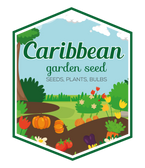
Tulip Bulbs, Mariette ( Bulbs) Lily flowering
- Get free shipping to lower 48 states on orders $54.95+ (Most Items), excluding live plants, plant bulbs, and black plastic nursery crate.
- Most orders are processed by the next day !
- Safe Seed Pledge
- Select your desired size and/or color from the available options.
Lily Flowering Tulips
Unique among blooms, the Lily Flowering tulips are defined by their pointed petals. These flowers will close tightly during the cool evening temperatures but as the sun rises, their petals will begin to open dramatically as the weather warms – with some varieties appearing almost star shaped when viewed from above. The older varieties in the Lily Flowering grouping are century old and bear some resemblance to the original Turkish tulips while the newer varieties (Seattle and MoneyMaker) are some of the longest lasting blooms each spring at RoozenGaarde. These tulips look almost wild when planted in large garden plantings; they also make an elegant looking arrangement when used as fresh cut flowers.
Large Blooms
- Deer Won't Eat
- Excellent Cut Flower
- Excellent for Bouquets Flowers
Tulips
Originating in the foothills of Central Europe, tulips were brought to Western Europe in the 16th century and soon became synonymous with the Dutch culture and one of the world's most popular flowers. Tulips look best when grouped into larger sized garden plantings or pots and containers – although they also present a spectacular display when blooming in our enormous Skagit Valley fields!
- Large Blooms
- Deer Won't Eat
- Excellent Cut Flower
- Excellent for Bouquets Flowers
Growing tulips in containers, however, lets you skip most of these frustrations. In pots, tulips are eye-catching, portable, and protected. All gardeners—regardless of whether or not they’ve had success growing tulips inground—should give this simple technique a try.
To make the containers less heavy and easier to move, place an upside-down plastic grower pot at the bottom of each container. Fill the containers two-thirds full with any inexpensive, lightweight potting mix. Don’t bother with fertilizer. Ignore traditional spacing guidelines, and place the tulip bulbs in a tight circular pattern. Cover the bulbs with potting mix, planting the bulbs at the same depth you would plant them in the ground: generally two to three times the bulb’s height.
Potting up bulbs and storing them in an unheated space mimics inground planting, and the flowers will emerge in midspring. Forcing bulbs involves planting the bulbs just below the soil surface, with their tips peeking out.
Potted in fall, forced bulbs are stored in the dark at root-cellar temperature (about 40°F), then moved from the cellar into an area with light and warmth after just 10 to 12 weeks. They flower in midwinter, well before bulbs
planted at normal depths outdoors or in containers.
In southern climates with mild winters, plant bulbs in late November or December.
Prepare the garden bed by using a garden fork or tiller to loosen the soil to a depth of 12 to 15 inches, then mix in a 2- to 4-inch layer of compost.
Plant bulbs deep—at least 8 inches, measuring from the base of the bulb. And that means digging even deeper, to loosen the soil and allow for drainage, or creating raised beds. Remember, the bigger the bulb, the deeper the hole it needs.
Set the bulb in the hole with the pointy end up. Cover with soil and press soil firmly.
Water bulbs right after planting. Although they can’t bear wet feet, bulbs need water to trigger growth.
If you’re planning to raise perennial tulips, feed them a balanced fertilizer when you plant them in the fall. Bulbs are their own complete storage system and contain all of the nutrients they need for one year. Use organic material, compost, or a balanced time-release bulb food.
LET OUR CUSTOMER SPEAK FOR US

![[Seeds] - Caribbeangardenseed](http://caribbeangardenseed.com/cdn/shop/files/gift-card-gift-card-1_1024x1024_dfa857db-9150-4315-a362-7f0bb3fb9c47_60x28.png?v=1722895789)








